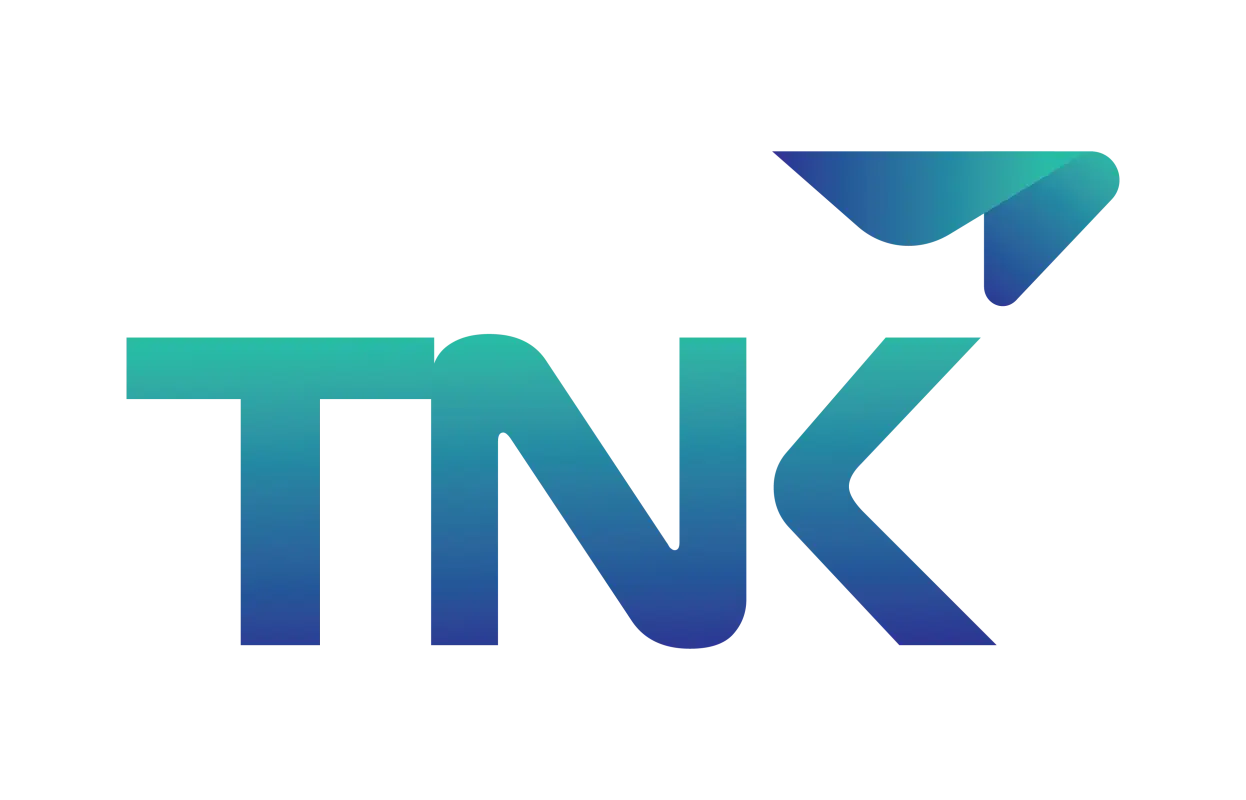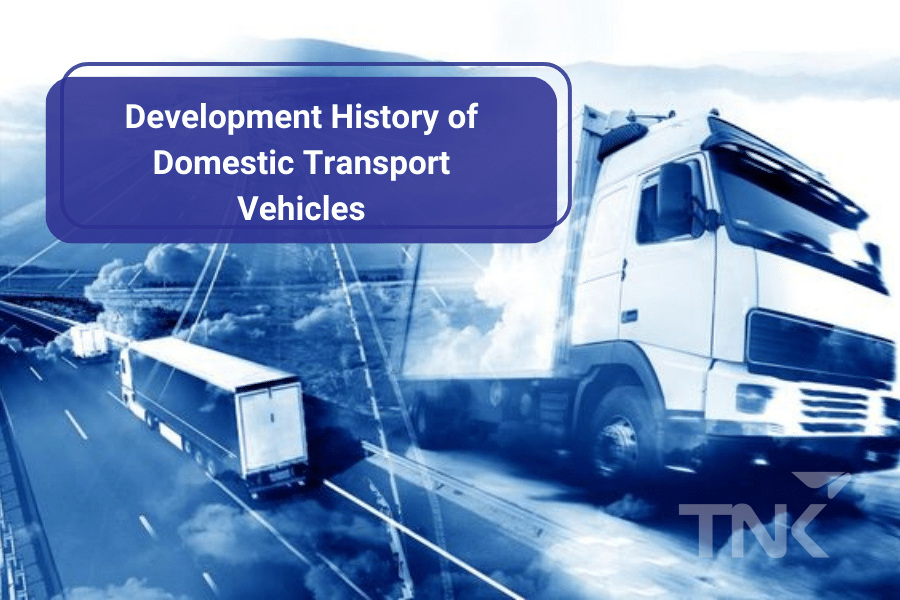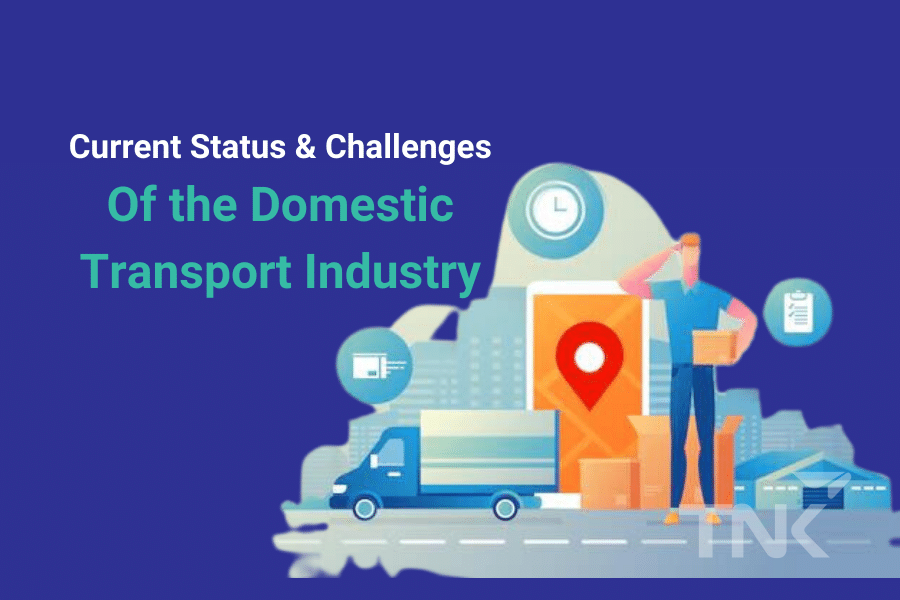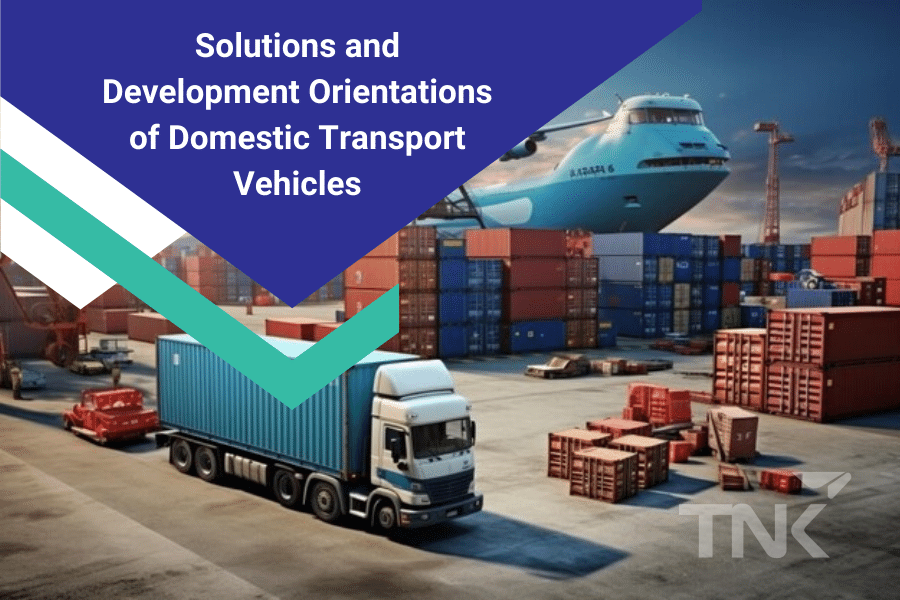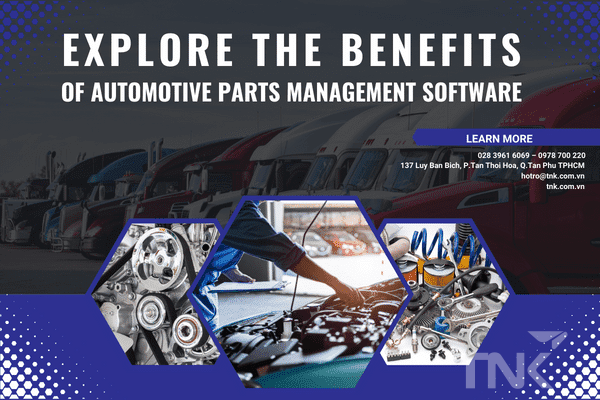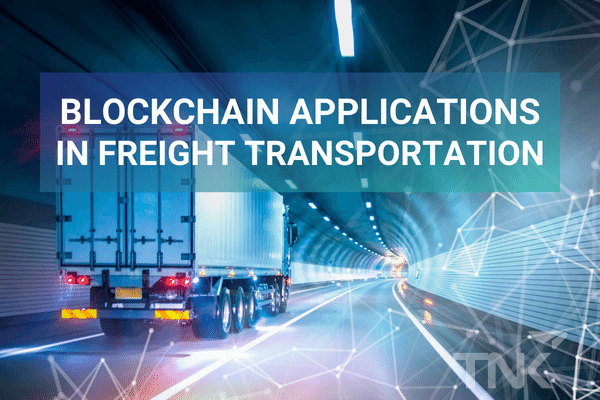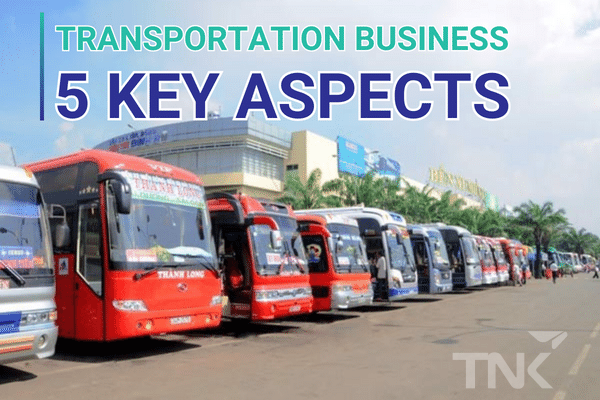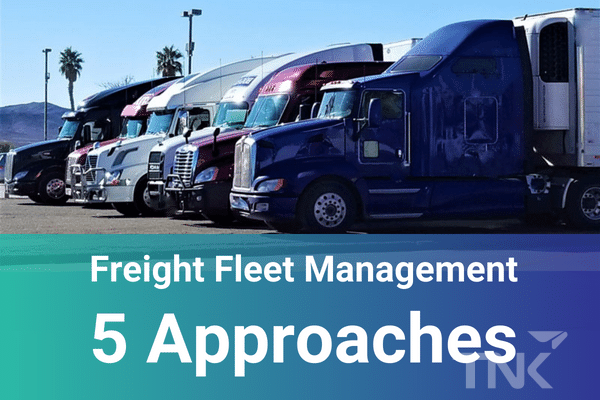Vietnam’s domestic transport industry has gone through a long period of development with many ups and downs and fluctuations. Thanks to the efforts of the Party, State and businesses, the transportation industry has achieved many important achievements, contributing to promoting the socio-economic development of the country.
Let’s join TNK to learn about the maturity process and future directions of the domestic transportation industry.
What is a domestic truck?
Domestic transportation plays an essential role in moving goods and people within the country. Domestic transport vehicles include:
- Trucks: Used to transport a variety of goods, from raw materials to finished products, with different loads and sizes.
- Bus: Serving the needs of mass passenger movement on fixed routes, connecting neighboring areas, cities and provinces.
- Coach: Provides premium passenger transportation services with optimal amenities and comfort, suitable for tourism or long-distance travel.
- Freight vehicles: Specialized for transporting special goods such as containers, dangerous goods, construction materials,…
- Other means of transportation: Including motorbikes, tricycles, auto-rickshaws,… play an important role in transporting goods and people in inner-city or rural areas.
Development history of domestic transport vehicles
Vietnam’s domestic transportation industry has a long history of development, associated with the country’s ups and downs. From rudimentary and self-made vehicles, the transportation industry has now made great strides, with a diverse and modern vehicle system, meeting the increasing transportation needs of the economy.
Early stage (Before the August Revolution)
Before the August Revolution, the domestic transport industry was mainly dominated by French and American capitalists. The transportation system is mainly roads and natural waterways, with a rudimentary and unsynchronized network. The main means of transport are horse-drawn carriages, rickshaws, boats, etc. with limited transport capacity and high costs, mainly serving domestic production and consumption needs.
Formative period (After the August Revolution)
After the August Revolution (1945 – 1954), the domestic transport industry was nationalized, state transport enterprises were established and developed strongly. The State invests in building basic transportation systems, purchasing means of transport and training staff and technicians. Improve transportation capacity, meet the needs of transporting goods to serve the resistance war against the French.
Innovation period (1986 – present)
Since the implementation of the reform, the domestic transport industry has had breakthrough developments:
- Upgrade and expand the basic transportation system, especially roads and highways. Diversify means of transport, using modern trucks, buses, containers, etc.
- Improve the quality of transportation services, meeting the increasing needs of the market economy.
- International integration, participating in free trade agreements, expanding the transportation market.
Private transport enterprises began to emerge, contributing to creating competition and promoting service quality improvement.
Integration phase
Vietnam’s accession to the WTO and regional free trade agreements have opened up new opportunities for the domestic transport industry.
- Vietnam’s transportation industry integrates internationally, participating in free trade agreements. Applying science and technology to transport management and exploitation.
- Expand the transportation market, attract foreign investment into the industry.
- Improve the competitiveness of Vietnamese transport enterprises.
- Apply international standards for transportation, ensure traffic safety and environmental protection.
- Develop multimodal transport, effectively combining different types of transport. Improve the quality of logistics services, meeting the needs of the global supply chain.
- Promote green transportation development and environmental protection.
Vietnamese transport enterprises strengthen international cooperation, improve domestic transport competitiveness to create a solid foundation when participating in the global transport market, and expand the scope of operations beyond borders. nation.
Current status and challenges of the domestic transport industry
Current Status
- Number and types of vehicles: The number of domestic transport vehicles has continuously increased in recent years. According to data from the Ministry of Transport, by 2023, Vietnam will have more than 2 million transport cars, in Trucks account for more than 90%, reflecting the development of the economy and increasing demand for transportation. However, the structure of vehicle types is still not reasonable, with the proportion of small-tonnage vehicles predominating, leading to overload, putting pressure on traffic infrastructure and affecting traffic safety.
- Vehicle quality: The quality of domestic transport vehicles is still limited. A significant portion of vehicles are old, outdated, and do not ensure technical safety and environmental protection.
- Operating efficiency: The operating efficiency of domestic trucks is still low. The rate of illegal loads is high, leading to fuel waste and increased transportation costs. The rate of vehicles committing traffic violations is high, posing a potential risk of traffic accidents. Besides, traffic jams often occur, especially in big cities, affecting transportation time and increasing logistics costs.
Domestic truck market segment
- Freight transportation: Accounts for the largest proportion, including transportation of domestic goods, import and export goods, dangerous goods, oversized and overloaded goods,…
- Passenger transport: Accounts for a smaller proportion, including inter-provincial and intra-provincial passenger transport, tourism,…
- Multimodal transport: Effectively combine different types of transport such as road, waterway, railway, and air to reduce road load, improve transport efficiency and reduce environmental pollution.
Market segmentation of domestic trucks often reflects the diversity of demand, transport infrastructure and business conditions in each region of a country. Below are some main market segments of domestic trucks classified by popular regions:
- The North: High transportation demand, many large transportation enterprises are concentrated, and the basic transportation system is developed.
- Central region: Average transportation demand, focusing on transporting agricultural and aquatic products.
- The South: High transportation demand, with many industrial parks, seaports, and modern basic transportation systems.
Challenge
- Transportation infrastructure: The transportation infrastructure system still has many limitations and cannot meet the increasing transportation demand.
- Gasoline prices: Gasoline prices fluctuate strongly, affecting transportation costs.
- Human resources: The transportation industry lacks workers with high technical qualifications.
- Competition: Competition in the transportation industry is increasingly fierce, requiring businesses to improve their competitiveness.
- Climate change: Climate change affects transportation activities, requiring businesses to have adaptive solutions.
Factors affecting the current status of domestic trucks
- Transport infrastructure: The basic transport system still has many limitations and cannot meet the increasing transport demand.
- Gasoline prices: Gasoline prices fluctuate strongly, affecting transportation costs.
- Human resources: The transportation industry lacks workers with high technical qualifications.
- Competition: Competition in the transportation industry is increasingly fierce, requiring businesses to improve their competitiveness.
- Climate change: Climate change affects transportation activities, requiring businesses to have flexible solutions to adapt.
Solutions and development orientation of domestic transport vehicles
Solution
- Transport infrastructure development: Upgrading and expanding road systems, bridges, seaports, airports,… to meet increasing transport needs.
- Stabilize gasoline prices: Apply policies to stabilize gasoline prices, reducing the burden on transportation businesses.
- Human resource training: Training human resources with high technical qualifications to meet the needs of the transportation industry.
- Improve competitiveness: Transport businesses need to improve service quality, reduce costs, and apply new technology to improve competitiveness.
- Adapting to climate change: Transportation businesses need to have solutions to adapt to climate change, such as using fuel-efficient vehicles, minimizing emissions,…
Orientation for sustainable development
Develop multimodal transport
- Develop a multimodal transport system, effectively combining different types of transport such as road, waterway, railway, and aviation to reduce road load, improve transport efficiency and reduce pollution. environmental contamination.
- Invest in the development of modern logistics centers to circulate goods smoothly and reduce traffic congestion.
Improve vehicle quality
- Improve transport vehicle quality standards, eliminate old, outdated vehicles that do not ensure technical and environmental safety.
- Encourage the use of fuel-efficient and environmentally friendly vehicles.
- Apply scientific and technical solutions to improve fuel efficiency and reduce emissions.
Human resource development
- Training human resources with high technical qualifications to meet the needs of the transportation industry.
- Raise worker awareness about traffic safety and environmental protection.
- Promote the application of information technology in transportation management and human resource training.
Apply technology
- Apply information technology solutions to transport management, such as GPS navigation system, TMS transport management system,… to achieve optimal transport operations and minimize costs.
- Apply electronic payment technology to facilitate customers and minimize the risk of loss.
- Develop mobile applications so customers can easily track goods status and book transportation services.
Promote international cooperation
- Strengthen international cooperation with countries in the region and around the world to learn experiences, share information and improve the competitiveness of the domestic transport industry.
- Join international trade agreements to expand the market for the domestic transport industry.
Developing green transportation
- Prioritize the development of green transportation, use renewable energy sources and reduce emissions.
- Raise people’s awareness about environmental protection and using green transportation services.
- Apply policies to encourage businesses and people to use green transportation services.
The domestic transportation industry plays an important role in Vietnam’s economy and social life. Developing the domestic transport industry in a sustainable way requires the joint efforts of state management agencies, transport businesses and people. With the right development orientations and the efforts of relevant parties, Vietnam’s domestic transportation industry will continue to develop and contribute to the country’s prosperity.
TNK Technology & Solution Company Limited
Address: 137 Luy Ban Bich, Tan Thoi Hoa Ward, Tan Phu District, Ho Chi Minh City
Hotline: 028 3961 6069 – 0978 700 220
Email: hotro@tnk.com.vn
Website: tnk.com.vn
– Gasoline prices fluctuate strongly, affecting transportation costs.
– The transportation industry lacks workers with high technical qualifications.
– Competition in the transport industry is increasingly fierce, requiring businesses to improve their capacity.
– Climate change affects transportation activities, requiring businesses to have adaptive solutions.
– Improve transport vehicle quality standards, eliminate old, outdated vehicles that do not ensure technical and environmental safety.
– Apply information technology solutions to transport management, such as GPS navigation system, transport management software, fuel monitoring… to make transport operations highly effective.
– Cooperate with countries in the region and around the world to learn experiences, new technologies and share more useful information.

Working in a unit specializing in providing support software for the TNK transportation sector. With a deep understanding of the industry and proficiency in technology, we are committed to providing reliable information and solutions, helping readers feel confident and secure in the process of learning and applying technology. into the transportation sector.
